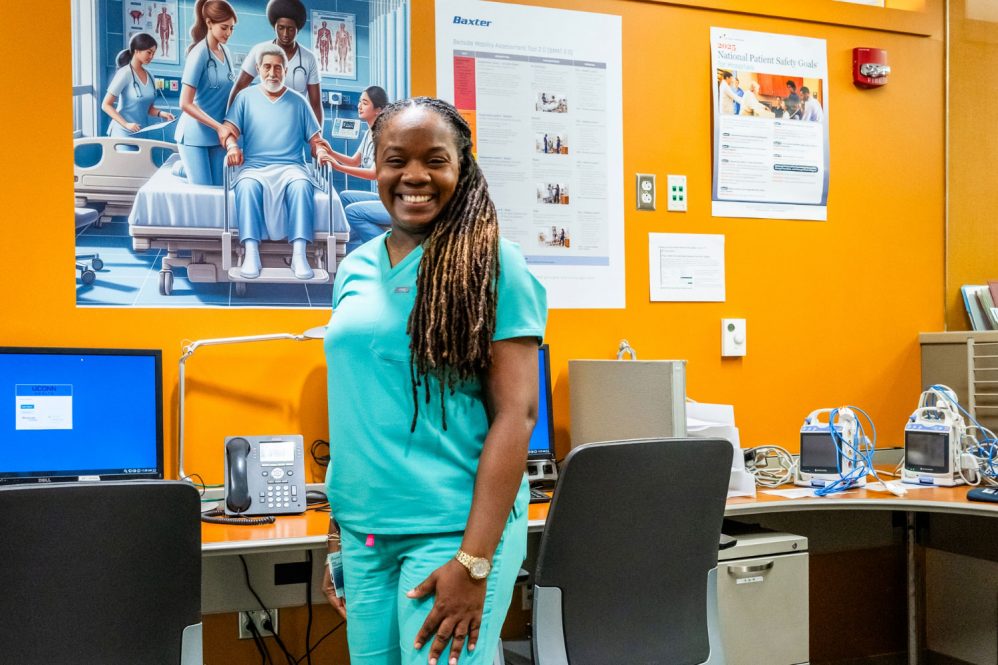UConn Health introduces 'Heal and Power of Movement'

Desiree Mahon, clinical health coordinator, leads the nurse-driven "Heal and Power of Movement" project at UConn Health's orthopedic floor, helping patients regain mobility and enhancing nurse safety and autonomy. (Tina Encarnacion / UConn Health photo)
A new doctor of nursing practice project has been implemented into John Dempsey Hospital's orthopedic surgical floor. "Heal and Power of Movement" is a re-implementation of the bedside mobility assessment tool (BMAT) that is nurse-driven and an evidence-based standard designed to help those with movement issues.
Desiree Mahon, UConn Health's clinical program coordinator, leads the project, focusing on improving mobility for patients facing movement challenges due to everyday limitation, serious accidents, or disabilities. The program not only helps patients regain strength and independence but also supports nurses.
"Introducing a standardized framework for mobility care, it boosts nurses' confidence and competence, reduces risk of injury through safe patient handling practices, and fosters a sense of professional autonomy in advancing mobility as medicine," Mahon says.
Developed over four months, this project is now integrated with Epic, a software platform that helps health care organizations securely manage patient information, including electronic health records.
Mahon spends at least two hours daily on mobility efforts. Unlike traditional fall prevention and mobility programs, this project combines them into a single, nurse-driven standard, emphasizing their clinical alignment and placing nurses at the center of decision-making.
"Patients are mobilized based upon their individualized BMAT score as assessed by their assigned RN," Mahon says. "I help them mobilize the patients if they must use the bathroom, turn the patient for repositioning, and any other mobilizing needs."
The program enhances early mobility based on the patient's mobility level, from in-bed exercise and bedside dangling to sit-to-stand moves, transfers, and ambulation with or without assistance. These activities prioritize both patient and nurse safety, with special attention given to elderly, disabled, and functionally declining patients.
"You don't want patients acquiring any hospital acquired infections by being in bed for extended periods of time," Mahon says.
At UConn Health, training and visual aids such as UConn sneakers, which mark every 60 feet along the hallways, are helping staff better support patient mobility. While this has improved, challenges remain, including shifting the perception of mobility from an additional task to a nurse-driven assessment, and aligning these assessments with provider orders to give autonomy in patient care.
Heal and Power of Movement is a beneficial project, not only helping patients with their mobility, but also the staff members who care for these patients, Mahon says. "It decreases length of stay, it has optimized patient outcomes; most patients can go back home, they don't need to go to a rehab facility, it helps prevent pressure ulcers, developing any cardiac and respiratory decline while they are in the hospital, and it's also safe for the health care providers."
With new tools and a new approach, the Heal and Power of Movement project is reshaping how mobility is viewed in patient care. UConn Health's goal is to expand it hospital-wide by embedding BMAT into other clinics, building stronger connections with providers, pharmacists, advanced practice nurses, rehabilitation teams, and social workers.






